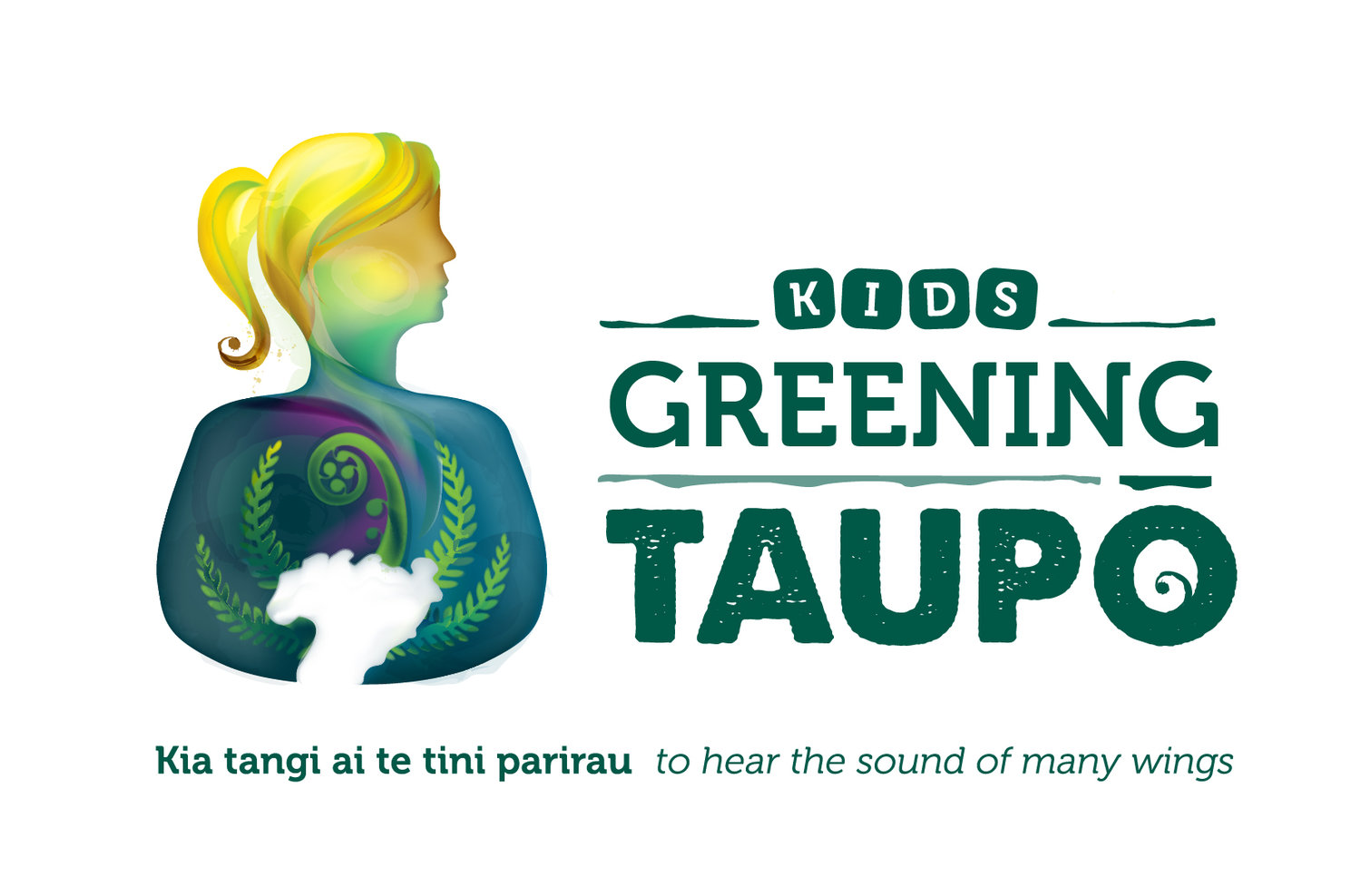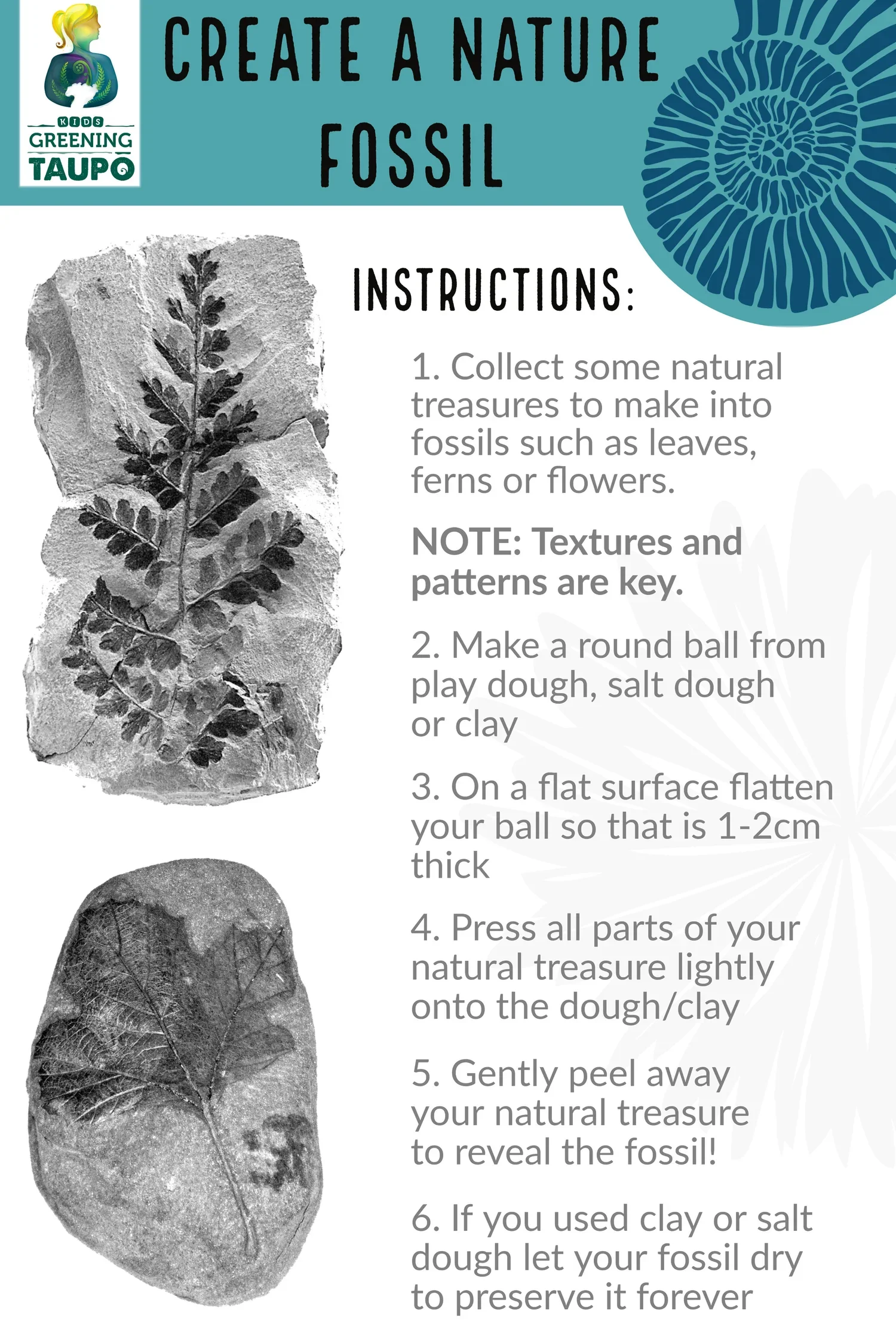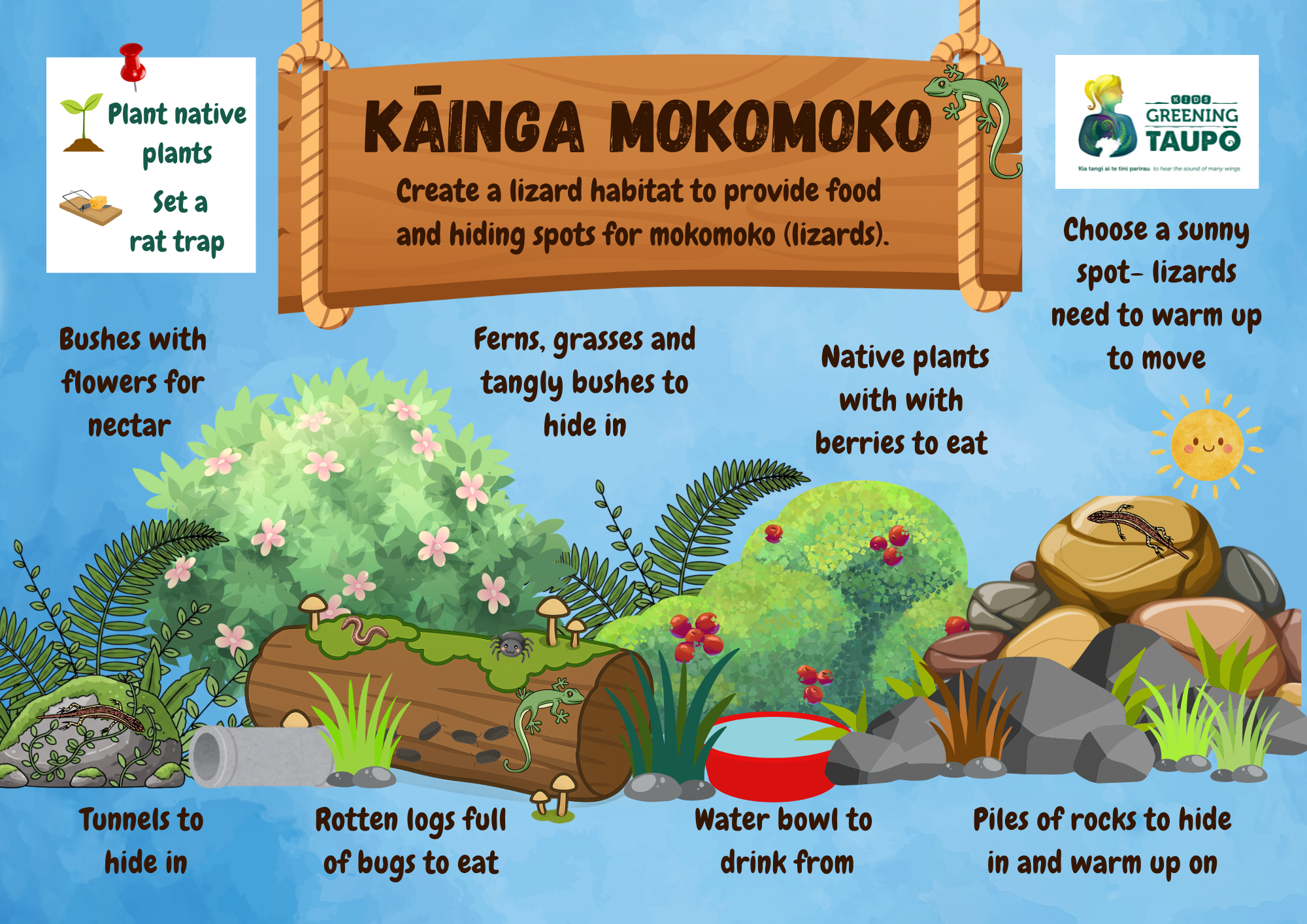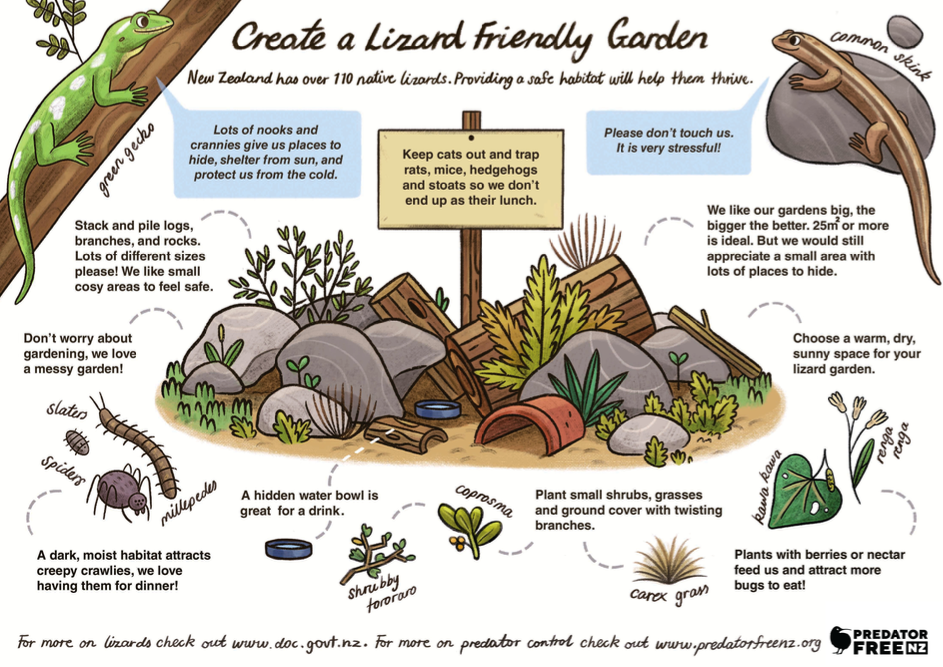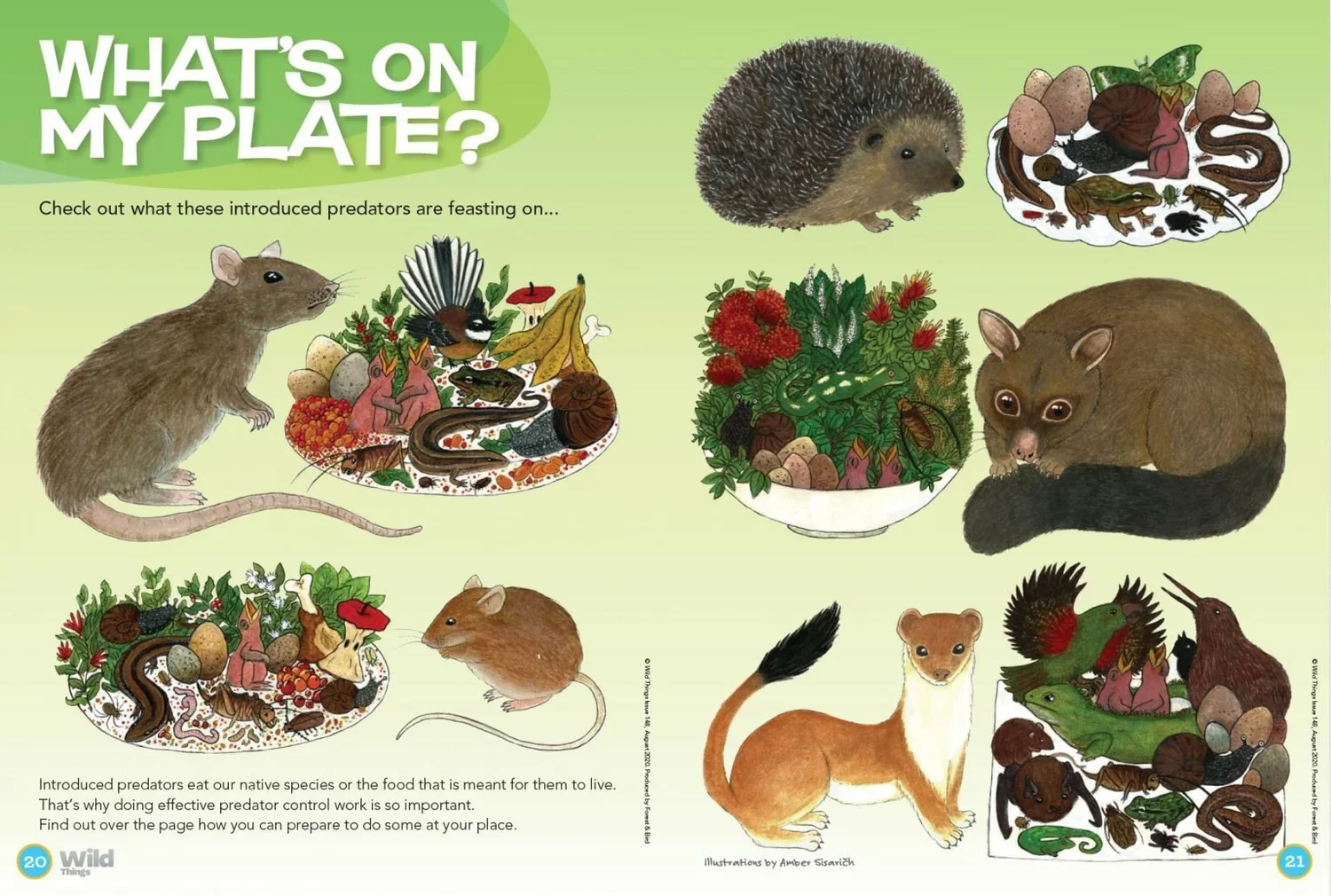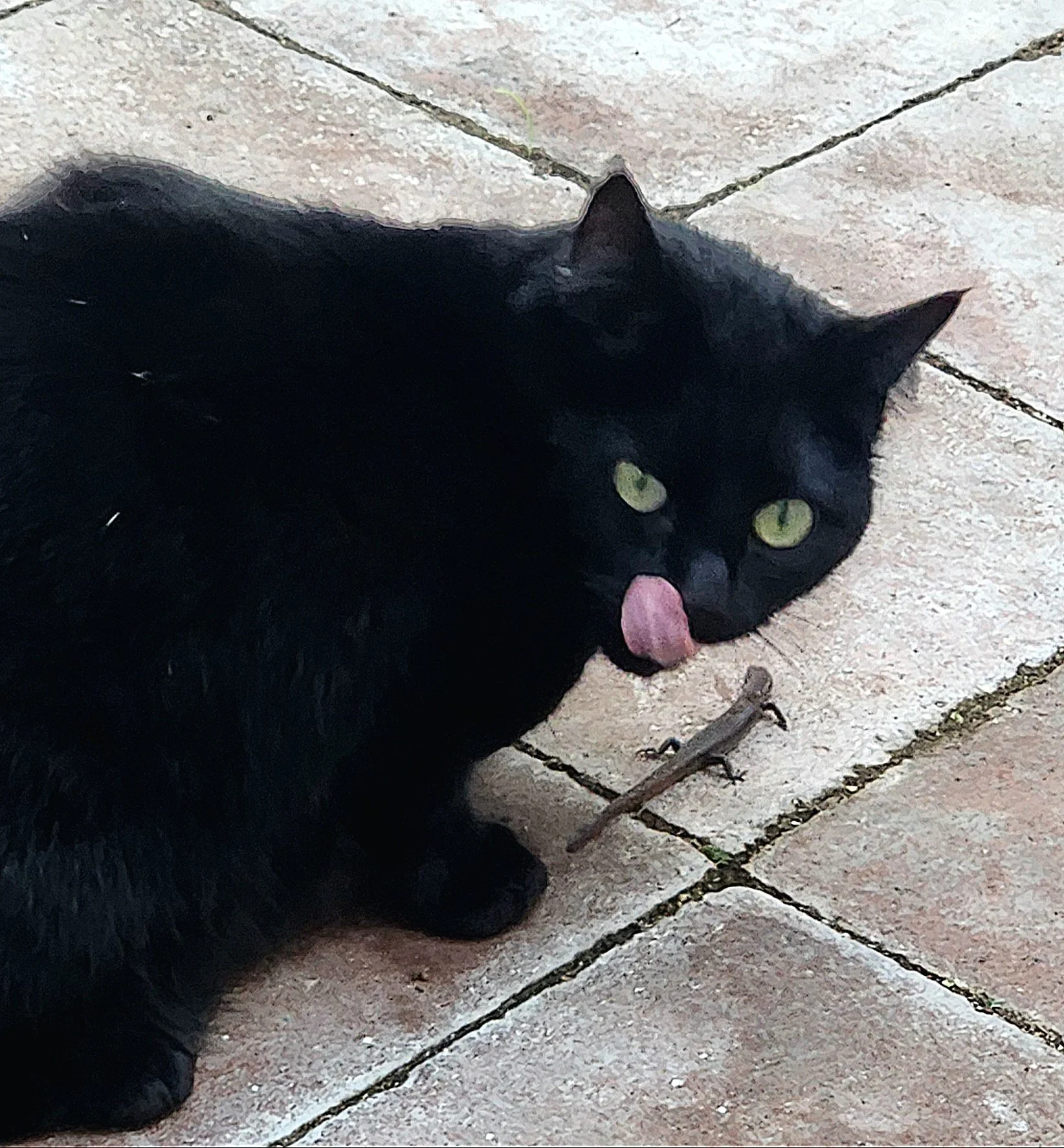Lizards and Tuatara of Aotearoa
Nau Mai! Welcome to the Kids Greening Taupo Online Nature Classroom!
This Online Nature Classroom is all about Mokomoko/lizards and tuatara
AN INTRODUCTION TO THE LIZARDS AND TUATARA OF AOTEAROA
Aotearoa is home to over 120 species of endemic lizards, yet we don’t hear about them nearly as much as our 170 species of endemic birds. Our endemic lizard species are divided into geckos and skinks (tuatara aren’t lizards).
Amongst these species of endemic lizards in Aotearoa there are skinks who live near waterways and between rocks, geckos living deep in the forest using camouflage to protect themselves, lizards living high up in the scree slopes, and others that hide in tussock bushes. Some can defy gravity, climbing completely upside-down with their ‘sticky’ toes, while others like to hang out on the ground. Some lizards can chirp or even bark (like a dog). Their skin can be rough, spiny or shiny and range in colour from bright fluorescent greens to dull brown, dark green, grey and black- with and without detailed patterns for camouflage.
Lizards can eat a range of foods including insects, berries, nectar and plants, and can even play a role in seed dispersal and pollination. These lizards range in size with the biggest being the Duvaucel’s gecko that can grow up to massive 16cm (not including their tail length). When threatened lizards can drop their tails to wriggle free from an attack, unfortunately this can cause lizards to die of starvation and cold over winter as they store lots of fat in their tails. Only one of our endemic lizards lays eggs (the egg laying skink), all other species give birth to live young. In the wild, some geckos can live for over 40 years.
All lizards are cold-blooded and require the warm sun to heat their bodies. If they get too cold they become much slower in life processes and reactions. They may slip into a state known as ‘torpor’, which is like hibernation or a very deep sleep. In this state, they may not be able to move at all, even to escape a predator that is nibbling on them!
Tuatara are a type of reptile under their own special grouping. They aren’t lizards because they don’t have ears on the outside of their body like other lizards do, they are nocturnal (active at night) and like colder temperatures.
Let’s have some fun learning all about Aotearoa’s lizards and tuatara this week!
Resources for teachers/EDUCATORS:
Our ‘Fill your Kete’ section will provide you with some fun nature activities based around our topic. As this theme is mokomoko/ lizards and tuatara of Aotearoa, our activities are based around identification, unique features, threats and lizard conservation.
Lizard Identification and special features
What is the difference between a skink and a gecko?
Skinks are slender with sleek bodies, narrow heads, no neck and small eyes (like little snakes with legs!). Geckos are broader and have loose velvety skin, that they shed in large pieces, or even in one big piece. Skinks have tight shiny skin with scales, like fish scales. They shed their skin in small pieces. Geckos don’t have eyelids but instead have a transparent scale covering their eye. They lick their eyeballs to keep them clean! Skinks have eyelids and blink to clean their eyes.
Try this interactive Venn diagram activity comparing gecko and skink traits (from Science Learning Hub)!
Watch this video about the our largest gecko- Duvaucel's gecko or this video about Aotearoa’s geckos and skinks to help complete the activity.
The NZ Herpetological Society has a great website with information about our lizards too.
Tuatara- Aotearoa’s living fossils
Everyone seems to know about the tuatara, Aotearoa’s most well-known reptile. Their Māori name means peaks on the back and refers to their little white spines.
Tuatara are born with some funky features, including a spiny egg tooth which helps them break through their shell, and even a third eye which covers over when they are born.
Tuatara lay their eggs in burrows and cover them over with dirt. These eggs then incubate for 13-14 months before the baby tuatara hatch. The gender of tuatara hatchlings is controlled by temperature. Eggs in colder temperatures produce more females, and eggs in warmer temperatures produce more males. Unfortunately, this means that along with predation and habitat destruction, tuatara populations will change with a warming climate. They are already extinct on the mainland.
Find out more about tuatara in this video.
Tuatara can live for over 100 years, but what is even cooler is that their ancestors are from the age of the dinosaurs, 200 million years ago! Tuatara are known as living fossils. What are fossils? Learn more about fossils in this video for kids.
Create a lizard friendly garden
Humans love to ‘tame’ nature. We mow our lawns and weed our gardens. We all like to have a tidy backyard. Unfortunately, our special lizard species prefer a different environment.
You can help them out!
Choose a warm sunny area of your garden to turn into a ‘lizard lounge.’ If you have a place with shrubs, flax and tussock that the lizards can hide in and under, that would be ideal. Lizards also like hiding in cracks and having cover, so add rotting logs, rocks, bark, tiles, pieces of corrugated iron, tunnels/pipes, and pieces of wood. A little bowl of water for them to drink would be great too! Plants with nectar and berries nearby will help provide food for the lizards. If you are really keen to establish a lizard village, you could protect them with a backyard trap and monitor them with a tracking tunnel!
You can watch videos, look at instructions and learn more about how to make a Lizard Lounge in our Make a Lizard Friendly Garden Nature Connector.
Many of our local schools have created Kainga Mokomoko, or lizard habitats. Some of them have created cool signs to tell other students what the area is for. You can see some of these signs here.
Check out the original source here: https://predatorfreenz.org/stories/create-lizard-friendly-garden/
Curiosity questions
Did you know that New Zealand has lots of amazing species of lizards? We have 120 species that are found nowhere else in the world! The worrying thing is that almost half of them are threatened or endangered. Why don’t we hear about this more often? We always hear about New Zealand’s endangered birds and dolphins, but most people don’t know about our many special, unique, and rare lizards.
This week’s inquiry challenge is for you to research:
Why are New Zealand’s lizards special, unique creatures that should be saved? What makes them different to lizards in other parts of the world?
Why are they threatened and what can we do about it? Then take action!
Once you have found some answers, make a poster or video to share with your class at school, and with us too. Actually, share it with anyone who will listen! We want you to convince people to help out our unique, but often forgotten, native lizards. See if you can make a difference by spreading the word about lizard conservation!
Read this ARTICLE to help get your research started.
Watch this video about lizards in Aotearoa to help you answer these questions.
Other resources that might help:
Check out this cool resource from KCC magazine! Think about lizards… what do you notice on every plate?
This pet cat has just killed a native NZ skink in Wellington. Learn how to protect lizards from cats here.
KI TE PANUI/ TO READ
This ki te Panui section is based on Lizards and Tuatara.
Head to the section below for the read aloud story, E Oma Moko Kākāriki! / Go Green Gecko!
If you already have this book make sure you head outside to connect to nature whilst enjoying it!
After reading/listening to the book make sure to try the follow up 3D gecko and biomimicry activity.
In each Online Nature Classroom we will give book suggestions along with at least one video read aloud.
Our recommendation is E Oma Moko Kākāriki! / Go Green Gecko!
Watch the read along below-
Follow up activity:
Make a 3D gecko and learn about biomimicry
After listening to the story, Go Green Gecko, you can make your own 3D Gecko, thanks to KCC magazine!
Research gecko colours and patterns, then have fun colouring it in and decorating it. Cut it out and stick it up on your wall or your ceiling like a real gecko. Did you know that geckos can stick to walls and easily walk along ceilings? Watch this video to learn more about the tiny hairs on geckos’ feet, and how they allow them to do this. This amazing ability is being studied by people all over the world who are trying to learn from the gecko. When people copy nature’s solutions to solve human problems, this is called biomimicry. There are people who have studied gecko’s feet to invent ways that they can climb up walls themselves. Even NASA scientists are studying gecko feet to create technology to use in space!
Click here to go the awesome KCC resource and get the printable instructions to make your gecko.
Learn more about New Zealand green gecko here.
